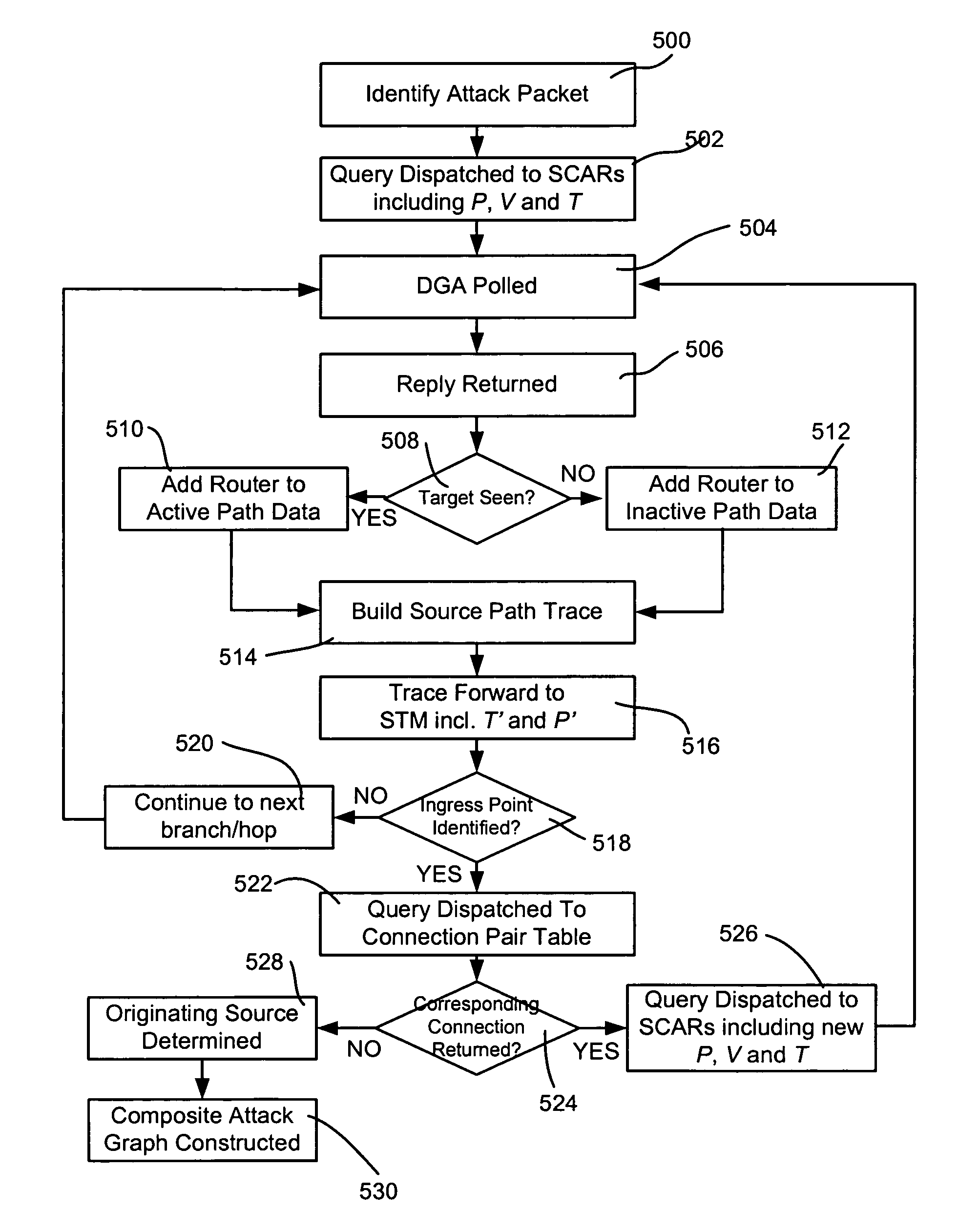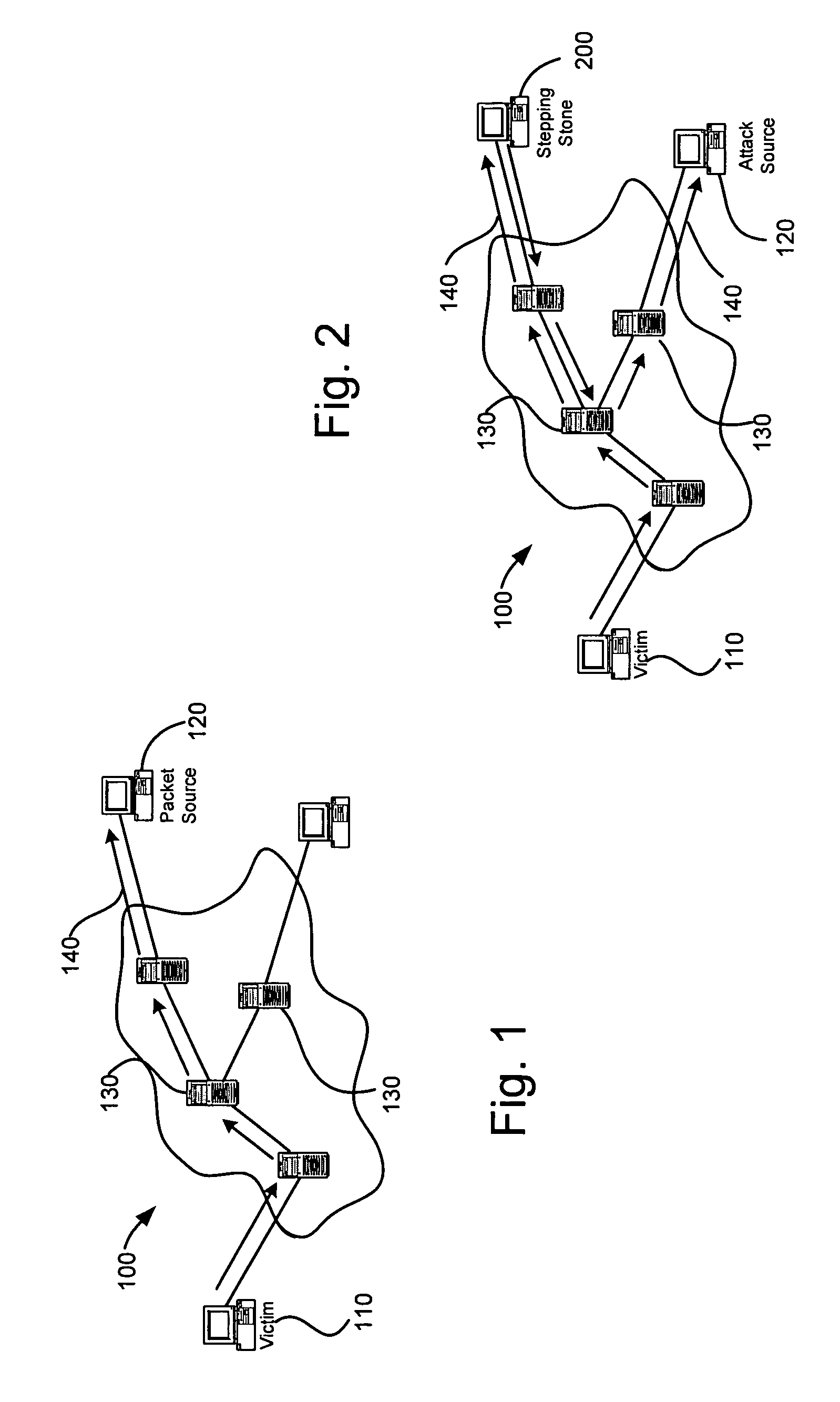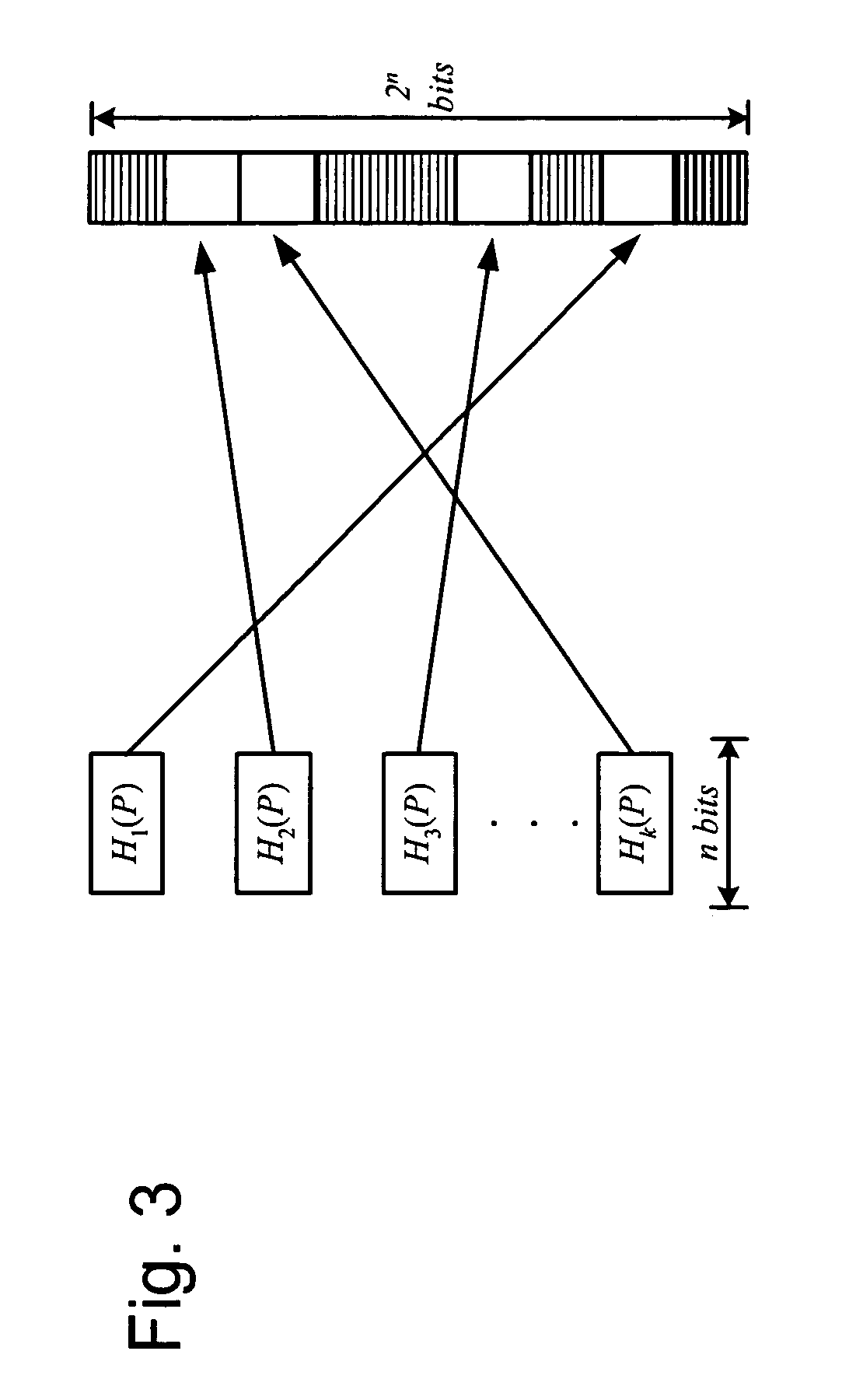Method and system for integrated computer networking attack attribution
a technology of integrated computer networking and attack attribution, applied in the field of communication networks, can solve the problems of increasing the number of vulnerability points from which malicious individuals can launch attacks, increasing the size of the internet, and increasing the threat posed by individuals, so as to facilitate identification of the intrusion location
- Summary
- Abstract
- Description
- Claims
- Application Information
AI Technical Summary
Benefits of technology
Problems solved by technology
Method used
Image
Examples
Embodiment Construction
[0024]The following detailed description of the invention refers to the accompanying drawings. The same reference numbers in different drawings may identify the same or similar elements. Also, the following detailed description does not limit the invention. Instead, the scope of the invention is defined by the appended claims and equivalents.
[0025]Methods and systems consistent with the principles of the invention may simultaneously perform IP traceback of attack packets and stepping stone detection.
Exemplary Network Configuration
[0026]FIG. 1 is a diagram illustrating an exemplary network 100 traversed during a network attack. Network 100 includes a victim host 110, a packet source host 120 and several intermediate routers 130 which facilitate movement of the attack from the source to the victim. As discussed above, an IP traceback that reaches a host has identified a potential source of a packet. However, this does not mean that the source of the attack has necessarily been determi...
PUM
 Login to View More
Login to View More Abstract
Description
Claims
Application Information
 Login to View More
Login to View More - R&D
- Intellectual Property
- Life Sciences
- Materials
- Tech Scout
- Unparalleled Data Quality
- Higher Quality Content
- 60% Fewer Hallucinations
Browse by: Latest US Patents, China's latest patents, Technical Efficacy Thesaurus, Application Domain, Technology Topic, Popular Technical Reports.
© 2025 PatSnap. All rights reserved.Legal|Privacy policy|Modern Slavery Act Transparency Statement|Sitemap|About US| Contact US: help@patsnap.com



